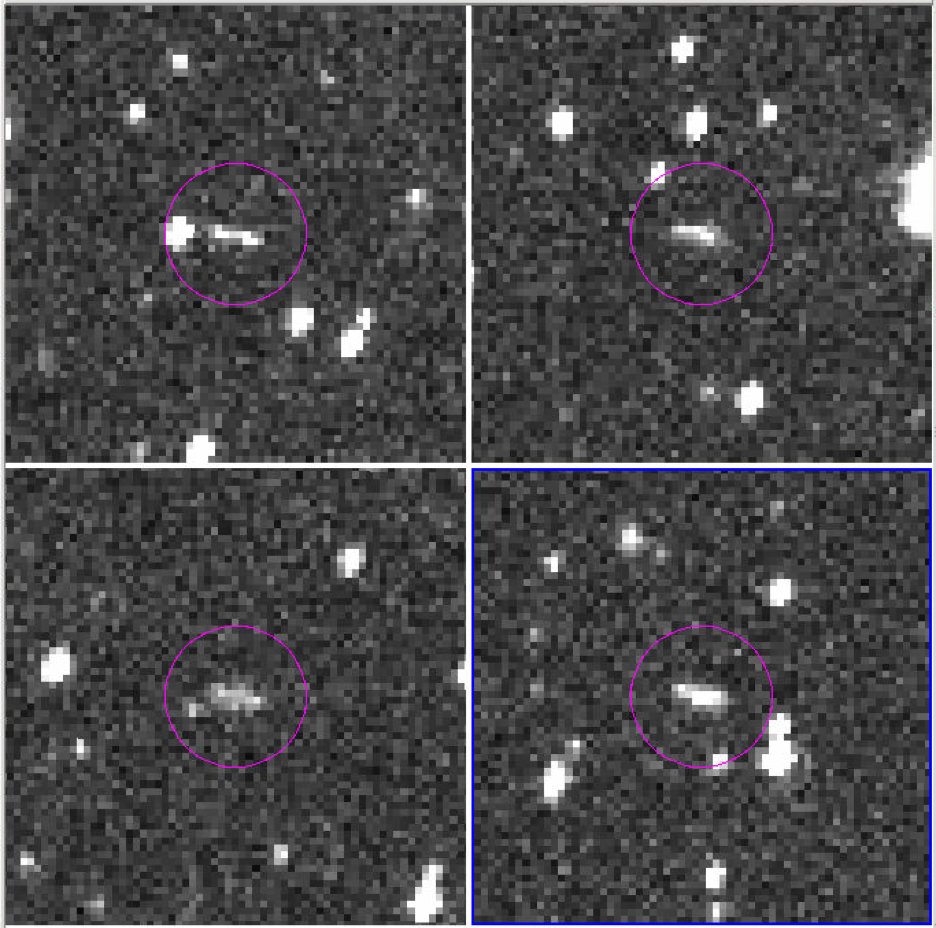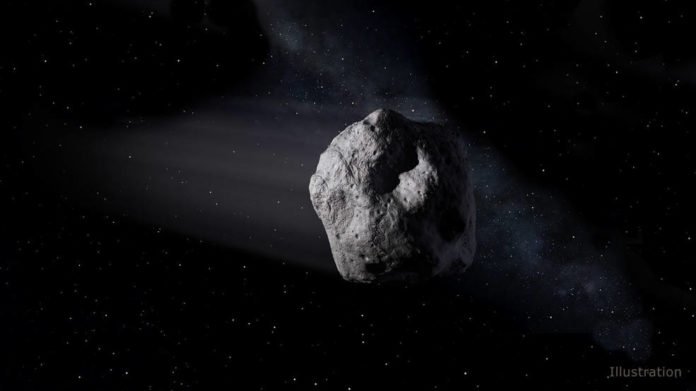The NASA-funded Catalina Sky Survey, located near Tucson and the University of Arizona have captured boulder-sized asteroid designated 2018 LA on Saturday morning. The detected asteroid is faint thus, estimated to be only about 6 feet (2 meters) across, which is small enough that it was expected to safely disintegrate in Earth’s atmosphere.
The asteroid entered Earth’s atmosphere at the high speed of 10 miles per second (38,000 mph, or 17 kilometers per second) at about 16:44 UTC (9:44 a.m. PDT, 12:44 p.m. EDT, 6:44 p.m. local Botswana time) and disintegrated several miles above the surface, creating a bright fireball that lit up the evening sky.
The asteroid was primarily detected as far away as the Moon’s orbit. It appeared as a streak in the series of time-exposure images taken by the Catalina telescope.

Credits: NASA/JPL-Caltech/CSS-Univ. of Arizona
Scientists then immediately calculated a preliminary trajectory indicating the possibility of an Earth impact and found that the asteroid was harmless as it was determined to be so small.
Lindley Johnson, Planetary Defense Officer at NASA Headquarters said, “This was a much smaller object than we are tasked to detect and warn about. However, this real-world event allows us to exercise our capabilities and gives some confidence our impact prediction models are adequate to respond to the potential impact of a larger object.”
Paul Chodas, manager of the Center for Near-Earth Object Studies (CNEOS) at JPL said, “The discovery of asteroid 2018 LA is only the third time that an asteroid has been discovered to be on an impact trajectory. It is also only the second time that the high probability of an impact was predicted well ahead of the event itself.”
NASA’s Planetary Defense Coordination Office is responsible for finding, tracking and characterizing potentially hazardous asteroids and comets coming near Earth, issuing warnings about possible impacts, and assisting coordination of U.S. government response planning, should there be an actual impact threat. JPL hosts the Center for Near-Earth Object Studies for NASA’s Near-Earth Object Observations Program, an element of the Planetary Defense Coordination Office within the agency’s Science Mission Directorate.
